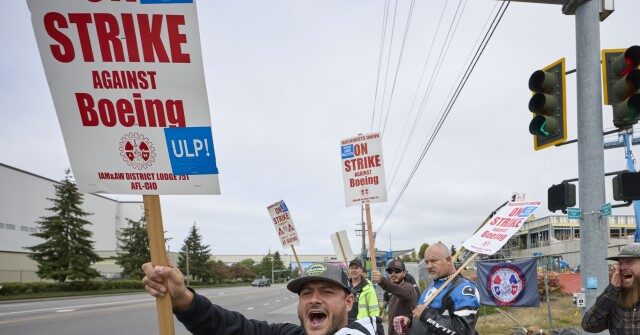Boeing, the leading airplane manufacturer, is currently facing formidable challenges, leading to plans to significantly reduce its workforce by approximately ten percent, equating to about 17,000 employees. This decision comes amidst an ongoing strike by machinists that has disrupted production for five weeks and a series of safety and manufacturing issues that have plagued the company recently. The situation has forced Boeing to delay the much-anticipated launch of its 777X wide-body aircraft until 2026, a setback that reflects broader operational struggles and growing financial losses.
Under the leadership of newly appointed CEO Kelly Ortberg, who has been in office for just over two months, Boeing is striving to regain stability. Ortberg’s tenure follows a tumultuous period marked by severe safety incidents, highlighting significant challenges in aircraft reliability. For instance, a Boeing plane lost a wheel mid-flight with 174 passengers on board after departing from Los Angeles International Airport in July, marking this as the second such incident within the same year. Additionally, in May, a separate Boeing aircraft had to make an emergency landing in Indonesia due to an engine fire, affecting 468 passengers. These incidents have compounded Boeing’s reputation issues regarding aircraft safety.
The company’s financial situation is dire, as highlighted in a recent report from CNBC. Boeing anticipates reporting a staggering loss of $9.97 per share for the third quarter, alongside a significant pretax charge of $3 billion in its commercial airplane unit and an additional $2 billion within its defense sector. This bleak outlook underscores the financial strain Boeing is experiencing, which is exacerbated by ongoing production halts due to the machinists’ strike. Such losses and charges reflect a critical moment in Boeing’s history, intensifying the need for decisive action and strategic change.
Compounding these financial woes, the ongoing machinist strike presents yet another hurdle for the new CEO. Negotiations between Boeing and the International Association of Machinists and Aerospace Workers have reportedly stalled, with the union alleging that Boeing has refused to negotiate on crucial matters including wages, retirement plans, and other employee benefits like vacation and sick leave. This breakdown in negotiations not only harms production capabilities but also raises concerns about the company’s ability to maintain a skilled workforce amidst mounting pressures.
Credit rating agencies have taken note of Boeing’s predicament, warning that the company is in danger of losing its investment-grade rating—a critical metric for maintaining investor confidence and financial stability. As Boeing endures significant cash burn rates during what was hoped to be a turnaround year, industry analysts are scrutinizing the sustainability of its business model and operational strategy. The financial losses and ongoing operational challenges have left stakeholders anxious about the manufacturer’s prospects for recovery.
In conclusion, Boeing’s situation encompasses a mixture of significant workforce reductions, ongoing safety concerns, and dismal financial forecasts, all while facing labor disputes that threaten its production capabilities. CEO Kelly Ortberg is confronted with the daunting task of navigating these challenges to stabilize and rebuild confidence in the company. The combination of adverse safety incidents, a machinist strike, and alarming financial losses represents a critical juncture for Boeing, highlighting the urgent need for comprehensive reforms and strategic oversight to rejuvenate its market position and restore trust in its aircraft products.

